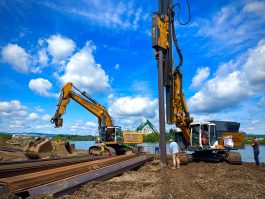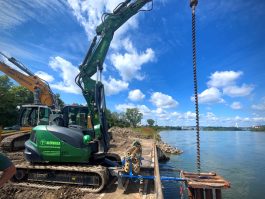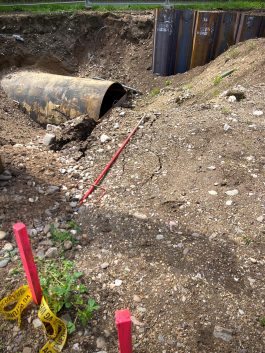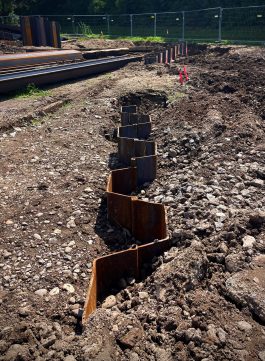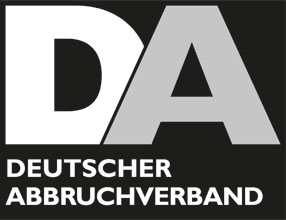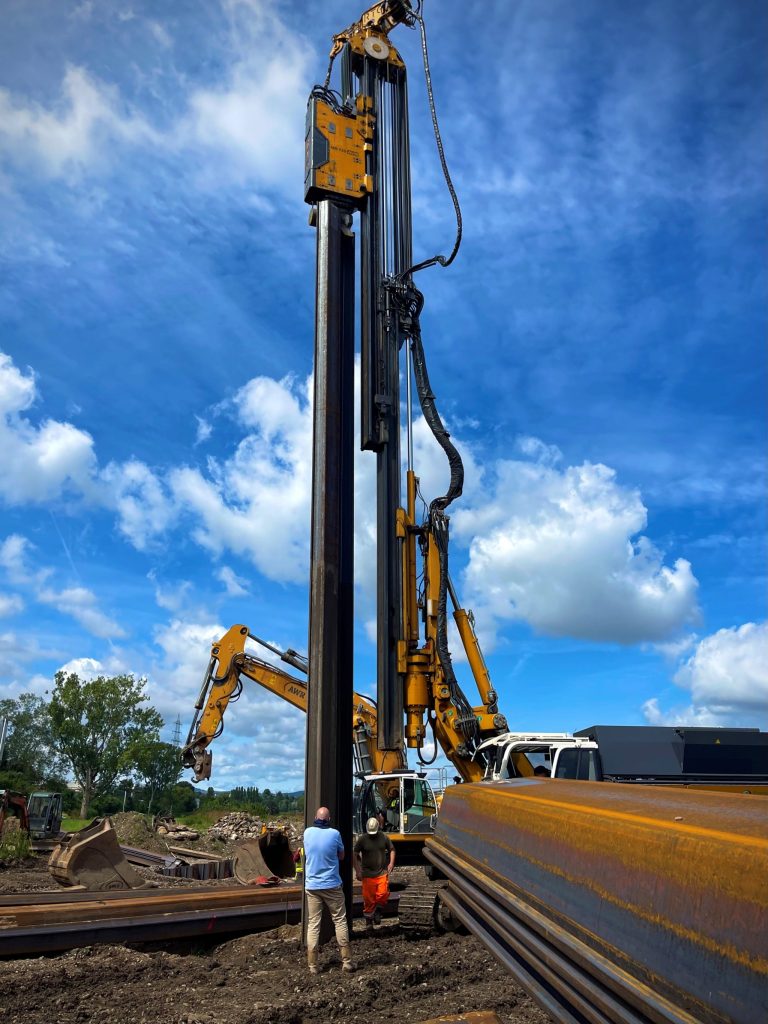
Complicated dismantling of a discharge structure at the Mülheim-Kärlich NPP

The Mülheim-Kärlich nuclear power plant near Koblenz was one of the first nuclear power plants in Germany to be taken off the grid. In 1988 – just 100 days after its first operation – it was shut down again due to a faulty construction permit procedure and finally decommissioned in 2001.
The dismantling is still not completely finished. Many DA companies have participated in the deconstruction. Among others, the companies ReCon Baumanagement GmbH and the engineering office Faßbender und Weber have taken care of the deconstruction permit for the former discharge structure on the Rhine. First, the existing structure had to be explored, for which the company UGB from Weiterstadt was called in.
The main difficulty in dismantling the discharge structure is that a part of the structure is integrated into the Rhine and thus has to be demolished under water. In order to ensure that no suspended and turbid matter, as well as mineral building materials, enter the Rhine and impair the water quality during mechanical demolition under water, the company Jansen Grundbau GmbH has to install sheet piles up to a depth of approx. 13 m on land and in the Rhine. However, this can only be done after the explosive ordnance has been cleared.
This creates an area of approx. 650 m² on which the new discharge structure is to be built. For the new discharge system, one of the two existing cooling water pipes will be separated from the technical structure. One pipe has already been filled with liquid soil over a length of 10-12 m (below the cycle path parallel to the Rhine). The other pipe will later be used as an emergency overflow in case the infiltration basin of the industrial area is not sufficient during heavy rainfall. In order not to have to tie back the shoring, it was chosen in such a way that the water level inside the sheet pile box and outside (in the Rhine) must always be the same. Removal is carried out by means of an excavator and hydraulic chisel. Approx. 900 to 1,200 m³ of concrete must be partially removed underwater using an underwater kit on the chisel (ZX 490 carrier).
Following the deconstruction, the site will be backfilled with gravel and natural material (grain size 0/45). The second DN 2200 pipe is reduced to DN 800 mm and serves as an emergency overflow for the existing seepage basin from the former power plant site.
The reinforced concrete pipe is specially designed for use in the Rhine floodplain (water). Parallel to the backfilling at ground level (top edge of the terrain), the Rhine embankment is paved with natural stones, as it is not permitted to work with concrete.
This work, in which the companies Jansen Grundbau, AWR Abbruch GmbH and RBS GmbH are involved, must be completed by November 2023.
More on this in the next issue of ABBRUCH AKTUELL, which will be published on 29.09.2023 and is also available online on our website.
